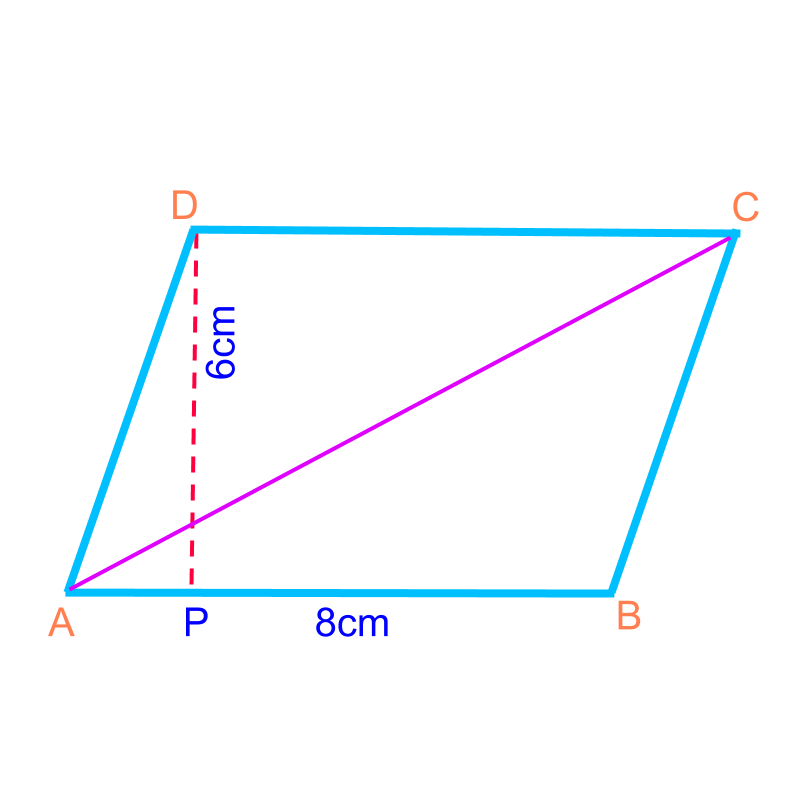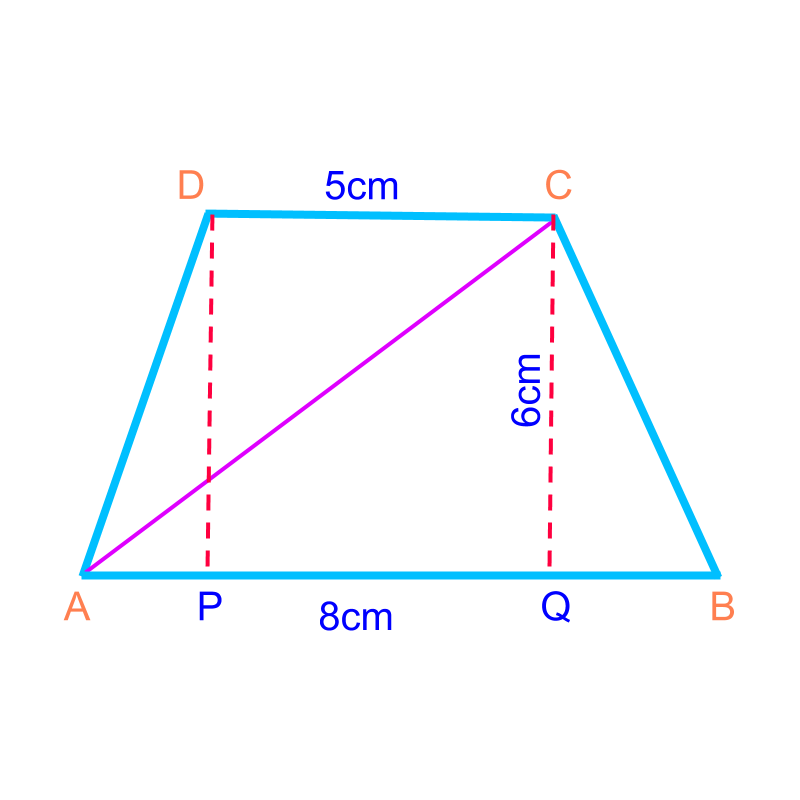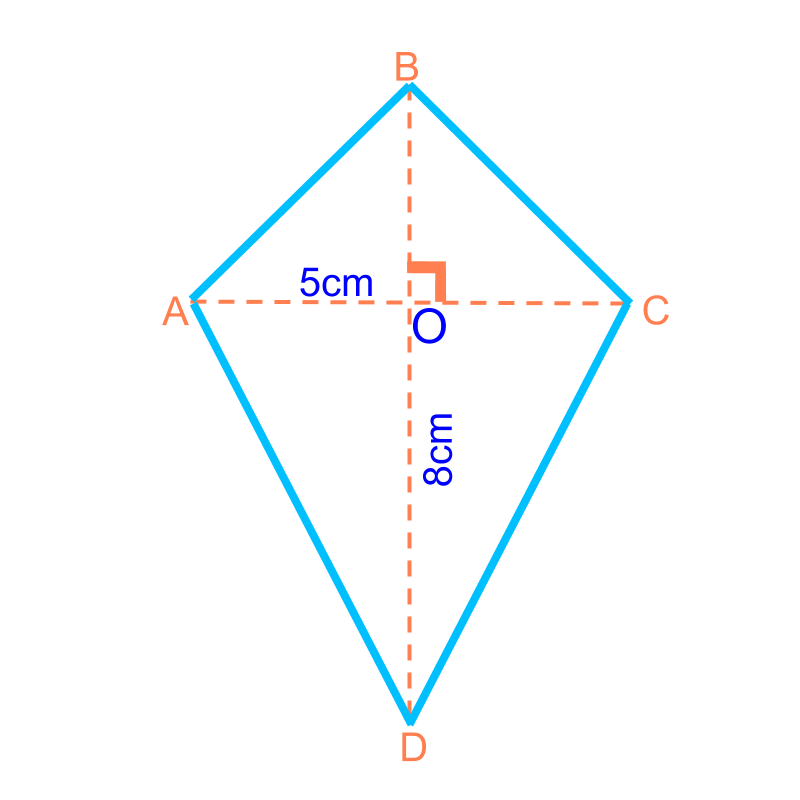
what you'll learn...
Overview
Area of Some Quadrilaterals : Consider the polygon shapes as combination of triangles and find sum of area of the triangles.


parallelogram
A parallelogram is a quadrilateral with two pairs of parallel sides.
Consider the parallelogram with base cm and height cm. The parallelogram is shown in the figure.
In general, to find area of polygons, consider them as combination of triangles. The same is applied to the parallelogram.

The parallelogram is considered to be two triangles and .
The area of parallelogram
sum of area of the two triangles
in a parallelogram the opposite sides are equal
trapezium
A trapezium is "a quadrilateral with one pair of parallel sides"
Consider the trapezium with two bases cm & cm, and height cm. The trapezium is shown in the figure.

The trapezium is considered as two triangles and .
The area of trapezium
sum of area of the two triangles
kite
A kite is "a quadrilateral with two pair of equal and adjacent sides"
Consider the kite with two diagonals cm and height cm. The kite is shown in the figure.

The kite is considered to be two triangles and .
The area of kite
sum of area of the two triangles
What is the area of a parallelogram of cm length and cm height?
The answer is "".
summary
Area of Some Quadrilaterals : Consider the polygon shapes as combination of triangles and find sum of area of the triangles.



Outline
The outline of material to learn "Mensuration basics : Length, Area, & Volume" is as follows.
Note: click here for detailed outline of Mensuration (Basics).
• Measuring Basics
→ Introduction to Standards
→ Measuring Length
→ Accurate & Approximate Meaures
→ Measuring Area
→ Measuring Volume
→ Conversion between Units of Measure
• 2D shapes
→ Perimeter of Polygons
→ Area of Square & rectangle
→ Area of Triangle
→ Area of Polygons
→ Perimeter and area of a Circle
→ Perimeter & Area of Quadrilaterals
• 3D shapes
→ Surface Area of Cube, Cuboid, Cylinder
→ Volume of Cube, Cuboid, Cylinder